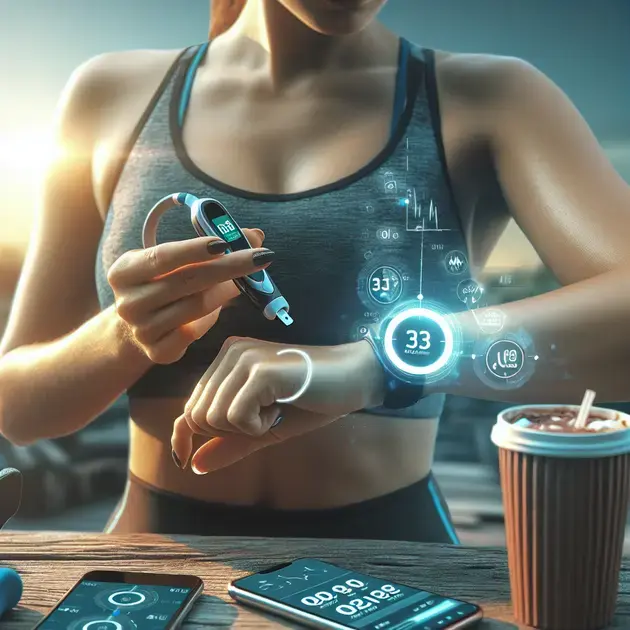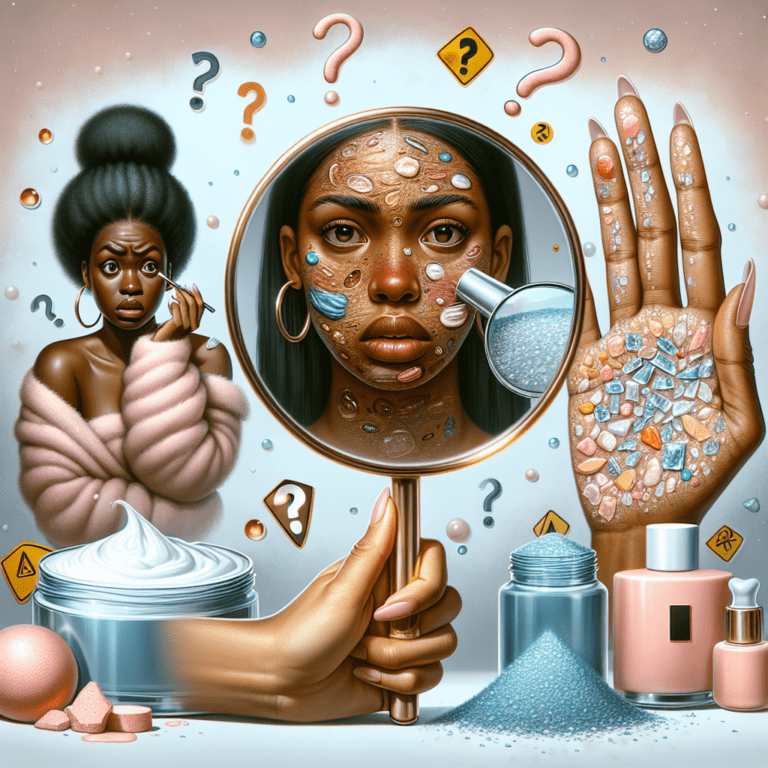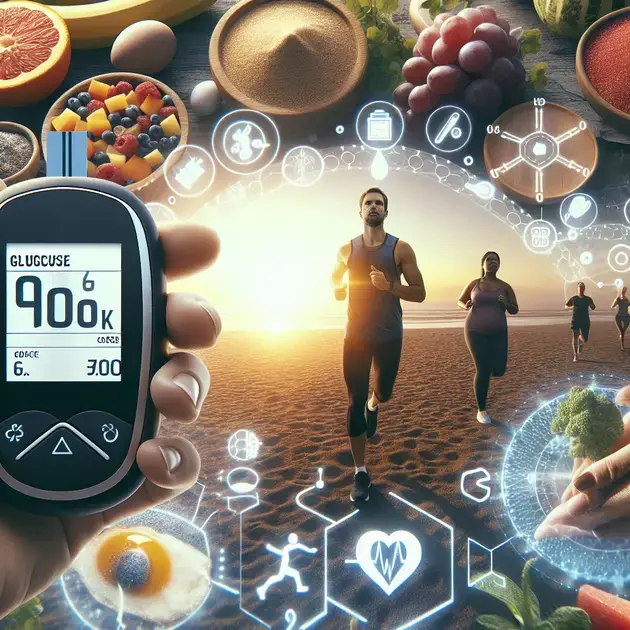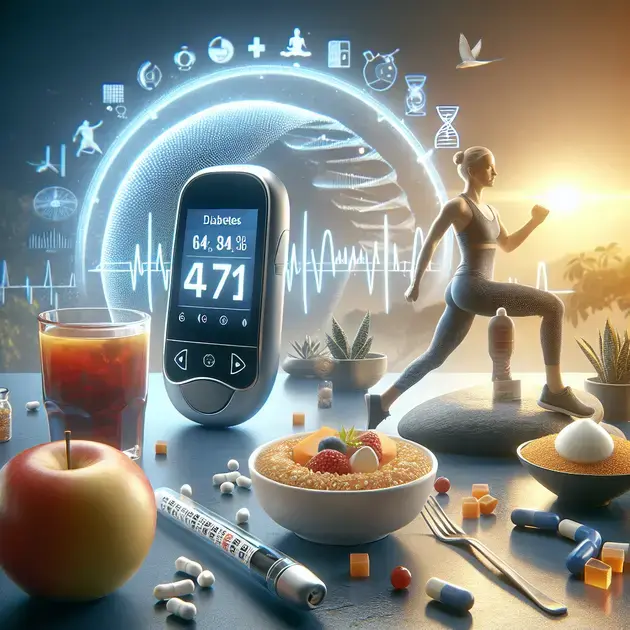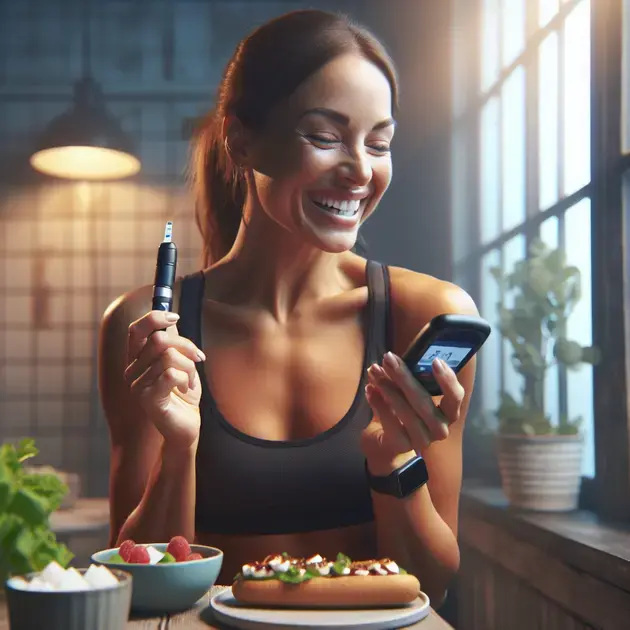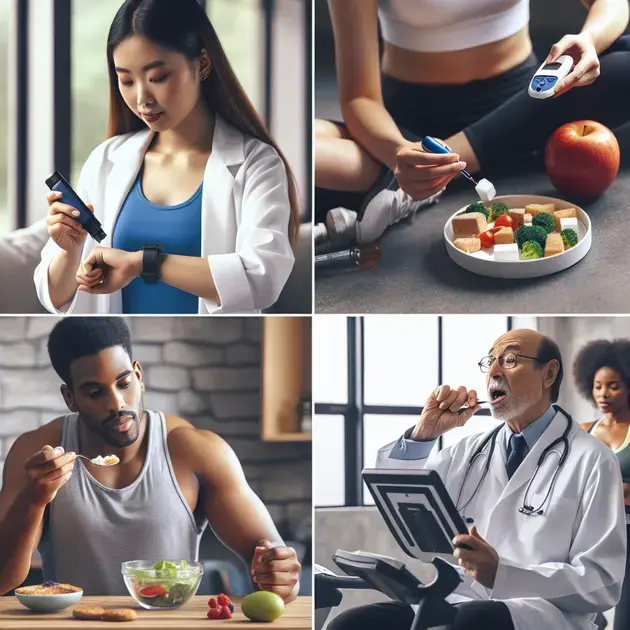Managing diabetic sugar readings is crucial for individuals with diabetes looking to improve their overall health. By closely monitoring blood sugar levels, diabetics can better manage their condition and prevent potential complications.
With advancements in technology, there are now various tools available to help diabetics track and manage their sugar readings more effectively. From smartphone apps to wearable devices, these innovations make it easier than ever for individuals to stay on top of their diabetes management.
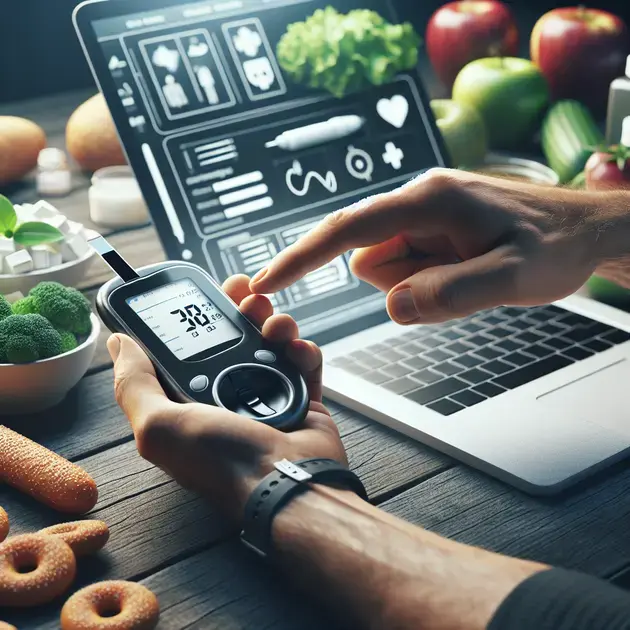
Improving Health Through Managing Sugar Readings
Monitoring your blood sugar levels regularly is essential for effectively managing diabetes and improving your overall health. By keeping track of your sugar readings, you can better understand how different factors such as diet, exercise, and medication impact your blood glucose levels. One way to monitor your sugar readings is by using a glucose meter, which is a portable device that measures your blood sugar levels at a given time.
To start managing your sugar readings, you can consider using popular glucose meter devices such as Accu-Chek Guide or OneTouch Verio. These devices come with instructions on how to properly use them to obtain accurate readings. You can also download apps like Glucose Buddy or mySugr to log and track your blood sugar readings conveniently on your smartphone.
It’s important to create a routine for checking your blood sugar levels to ensure consistency and accuracy. Find a specific time during the day to perform your blood sugar tests, such as before meals, after meals, or before bedtime. By establishing a monitoring schedule, you can stay on top of your sugar readings and make timely adjustments to your diabetes management plan.
Remember to record your blood sugar readings in a journal or using a digital tool to monitor trends over time. This data can help you and your healthcare provider identify patterns and make informed decisions about your diabetes treatment. Regularly reviewing your sugar readings will empower you to take control of your health and optimize your diabetes management.
Overall, managing your sugar readings is a crucial step in improving your health and well-being when living with diabetes. By utilizing the right tools and establishing a monitoring routine, you can proactively track your blood sugar levels and make necessary adjustments to lead a healthier lifestyle.
The Importance of Regularly Monitoring Blood Sugar Levels
Regularly monitoring your blood sugar levels is a fundamental aspect of diabetes management that can help prevent complications and maintain optimal health. Consistently tracking your sugar readings allows you to effectively manage your condition by understanding how your body responds to various factors like food, exercise, and medication.
To begin monitoring your blood sugar levels regularly, consult with your healthcare provider to determine the frequency and timing of your tests based on your individual needs. Your doctor may recommend checking your blood sugar before and after meals, before bedtime, or at other specific times throughout the day.
Utilize reliable glucose meters such as Contour Next or FreeStyle Lite to measure your blood sugar levels accurately. Follow the instructions provided with the device to ensure proper use and maintenance. Additionally, consider using a continuous glucose monitoring system like Dexcom G6 or Freestyle Libre for real-time tracking of your sugar levels.
Keep a log of your blood sugar readings either in a physical journal or through digital platforms like the mySugr app or Glooko. Documenting your results consistently will enable you to identify trends, detect patterns, and make informed decisions about your diabetes management plan. Share your sugar readings with your healthcare team during appointments for comprehensive care.
By regularly monitoring your blood sugar levels, you are taking a proactive approach to managing your diabetes and safeguarding your health. Stay vigilant about tracking your sugar readings, as it is a crucial component of leading a balanced lifestyle and ensuring that your diabetes remains under control.
Utilizing Technology for Better Diabetes Management
Technology offers innovative solutions to enhance diabetes management and streamline the process of monitoring blood sugar levels. By leveraging the capabilities of digital tools and applications, individuals with diabetes can effectively track their sugar readings, make informed decisions, and improve their overall well-being.
Explore diabetes management apps such as mySugr, Glooko, or Sugarmate, which allow you to log your blood sugar readings, track your food intake, monitor your physical activity, and receive insights into your health trends. These apps offer personalized features that cater to your specific needs and preferences, empowering you to take control of your diabetes care.
Incorporate wearable devices like continuous glucose monitors (CGMs) or smart insulin pens into your diabetes management routine for seamless monitoring and effortless data collection. Devices such as the Medtronic MiniMed 670G system or the Insulia app provide real-time feedback and automated insulin dosing recommendations, making it easier to manage your blood sugar levels effectively.
Take advantage of telemedicine services and online platforms that connect you with healthcare professionals for virtual consultations, guidance, and support. Apps like Livongo or One Drop offer personalized coaching, educational resources, and community forums to help you navigate your diabetes journey with confidence.
By embracing technology for better diabetes management, you can improve your quality of life, optimize your health outcomes, and stay engaged in self-care practices. Utilize digital resources, wearables, and virtual healthcare options to empower yourself in managing your diabetes proactively and efficiently.

**The Role of Nutrition in Diabetes Control**
Eating a Balanced Diet
One of the key components of managing diabetes is maintaining a balanced diet. This means consuming a variety of foods from all the food groups, including fruits, vegetables, whole grains, lean proteins, and healthy fats. It’s important for individuals with diabetes to pay attention to their carbohydrate intake, as carbohydrates have the most significant impact on blood sugar levels.
When planning meals, it’s helpful to consider the glycemic index of foods, which indicates how quickly a food raises blood sugar levels. Foods with a low glycemic index are digested more slowly and cause a gradual rise in blood sugar, making them ideal choices for individuals with diabetes.
Incorporating plenty of fiber into the diet is also essential for individuals with diabetes. Fiber helps regulate blood sugar levels, promotes satiety, and supports digestive health. Good sources of fiber include fruits, vegetables, whole grains, nuts, and seeds.
In addition to focusing on specific food groups, individuals with diabetes should also pay attention to portion sizes. Controlling portion sizes can help prevent spikes in blood sugar levels and contribute to overall blood sugar management.
Overall, maintaining a balanced diet that includes a variety of nutrient-dense foods can play a significant role in diabetes control and overall health.
Meal Planning and Monitoring
Meal planning is a crucial aspect of managing diabetes and controlling blood sugar levels. Planning meals ahead of time can help individuals with diabetes make healthier food choices, avoid impulse eating, and maintain consistent blood sugar levels throughout the day.
When planning meals, it’s important to consider the individual’s nutritional needs, preferences, and lifestyle. Creating a meal plan that includes a balance of carbohydrates, proteins, and fats can help individuals with diabetes regulate their blood sugar levels and stay healthy.
In addition to meal planning, it’s essential for individuals with diabetes to monitor their blood sugar levels regularly. Monitoring blood sugar levels can help individuals track how food choices, physical activity, and other factors affect their blood sugar levels.
By keeping a close eye on blood sugar levels and making adjustments to their diet as needed, individuals with diabetes can optimize their nutrition and improve their overall health and wellbeing.
Overall, proper meal planning and monitoring are critical components of diabetes management and can significantly impact blood sugar control.
**Conclusion**
A balanced diet is fundamental in managing diabetes, encompassing a variety of foods from all food groups to regulate blood sugar levels. Paying attention to carbohydrate intake, considering the glycemic index, and incorporating fiber-rich foods like fruits and vegetables are key to promoting stable blood sugar levels. Controlling portion sizes also aids in preventing blood sugar spikes, contributing to overall diabetes management and well-being.
Meal planning and monitoring play a pivotal role in controlling blood sugar levels. Planning meals in advance enables individuals to make healthier food choices, avoid erratic eating habits, and maintain consistent blood sugar levels throughout the day. Tailoring meal plans to individual nutritional needs and lifestyle ensures a balanced intake of carbohydrates, proteins, and fats, supporting blood sugar regulation and overall health.
Regular monitoring of blood sugar levels is imperative for individuals with diabetes to track the impact of their diet, physical activity, and other factors. By closely monitoring blood sugar levels and adapting their diet accordingly, individuals can optimize their nutrition, enhance their overall health, and effectively manage diabetes. Proper meal planning and monitoring are vital components of diabetes management, significantly influencing blood sugar control and fostering a healthier lifestyle.
